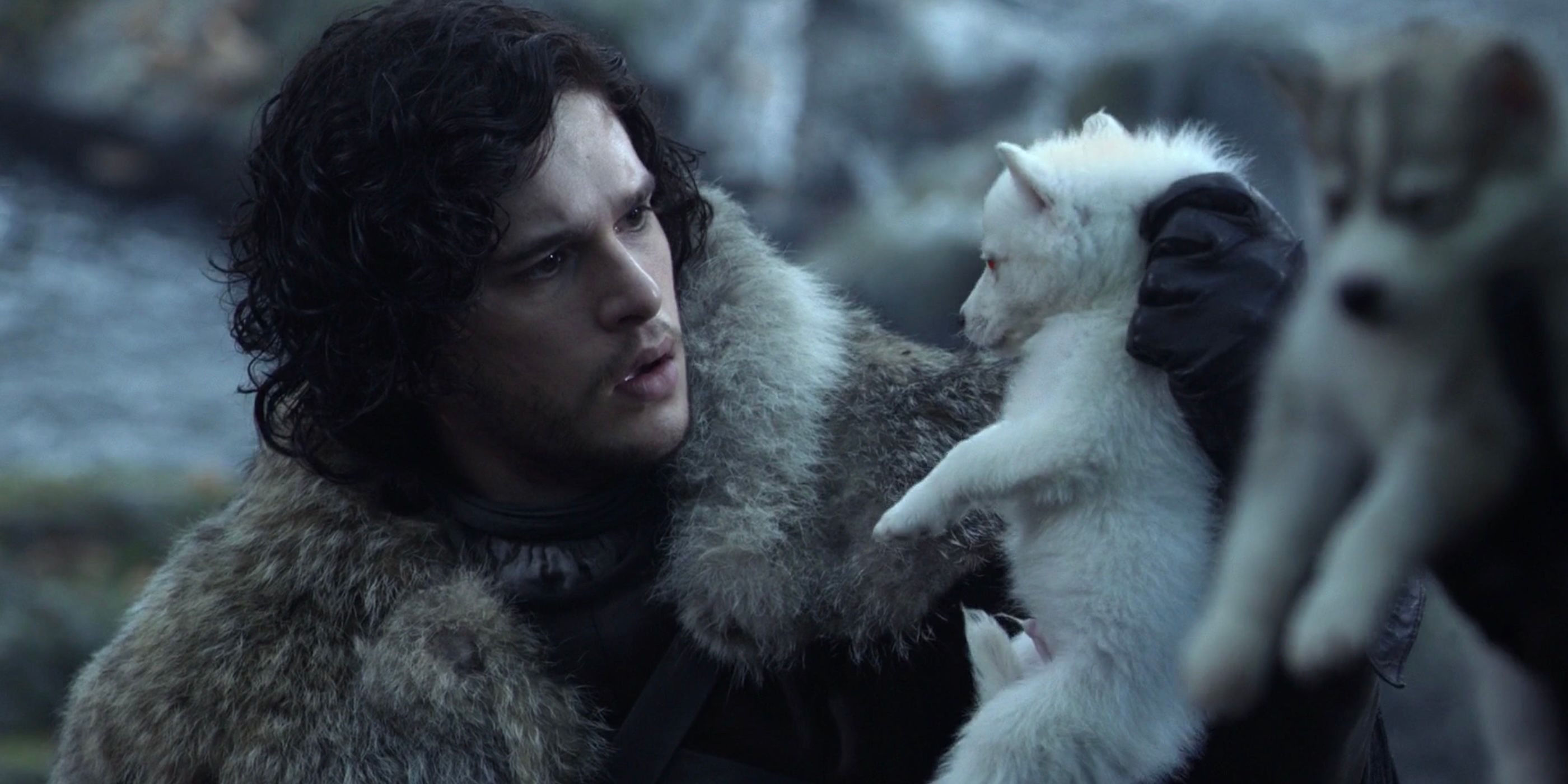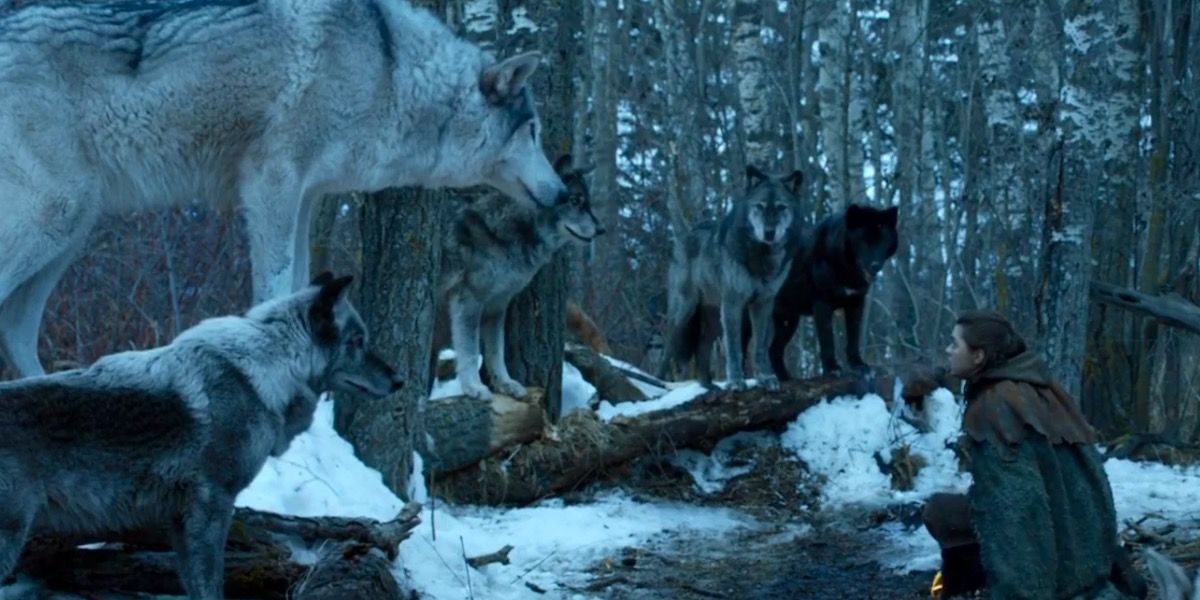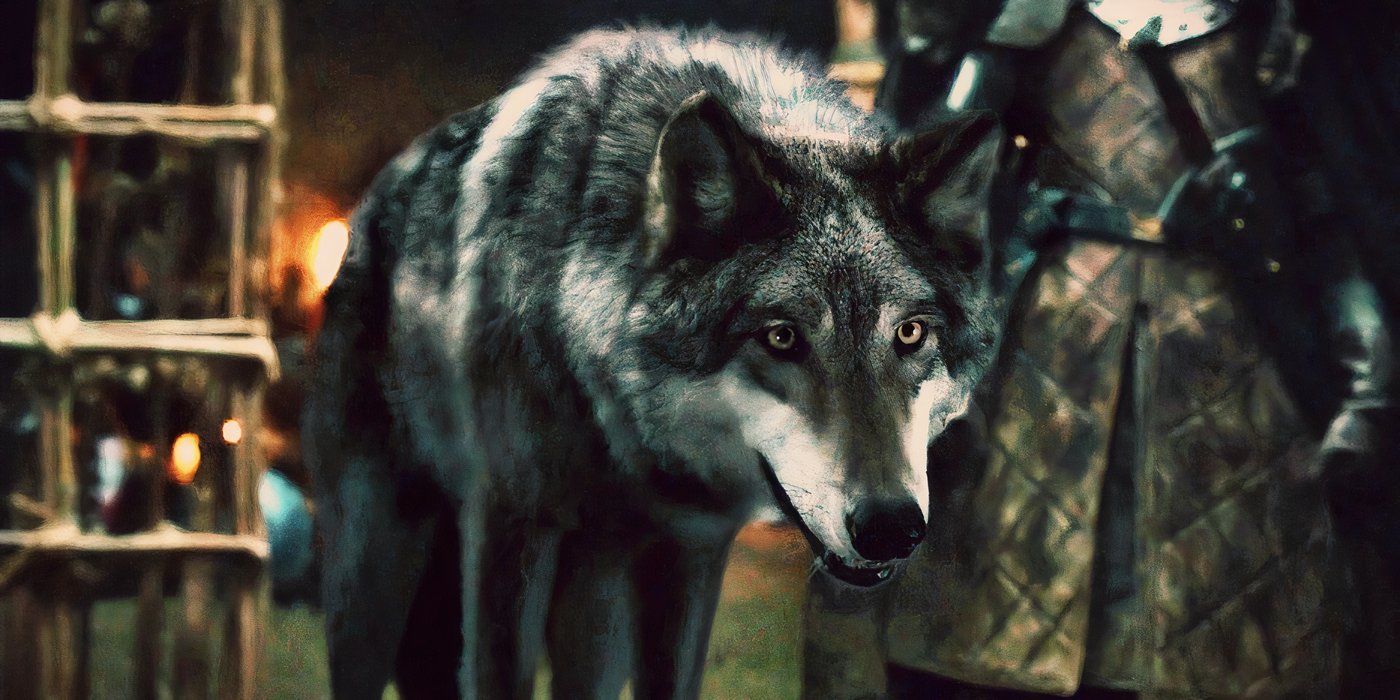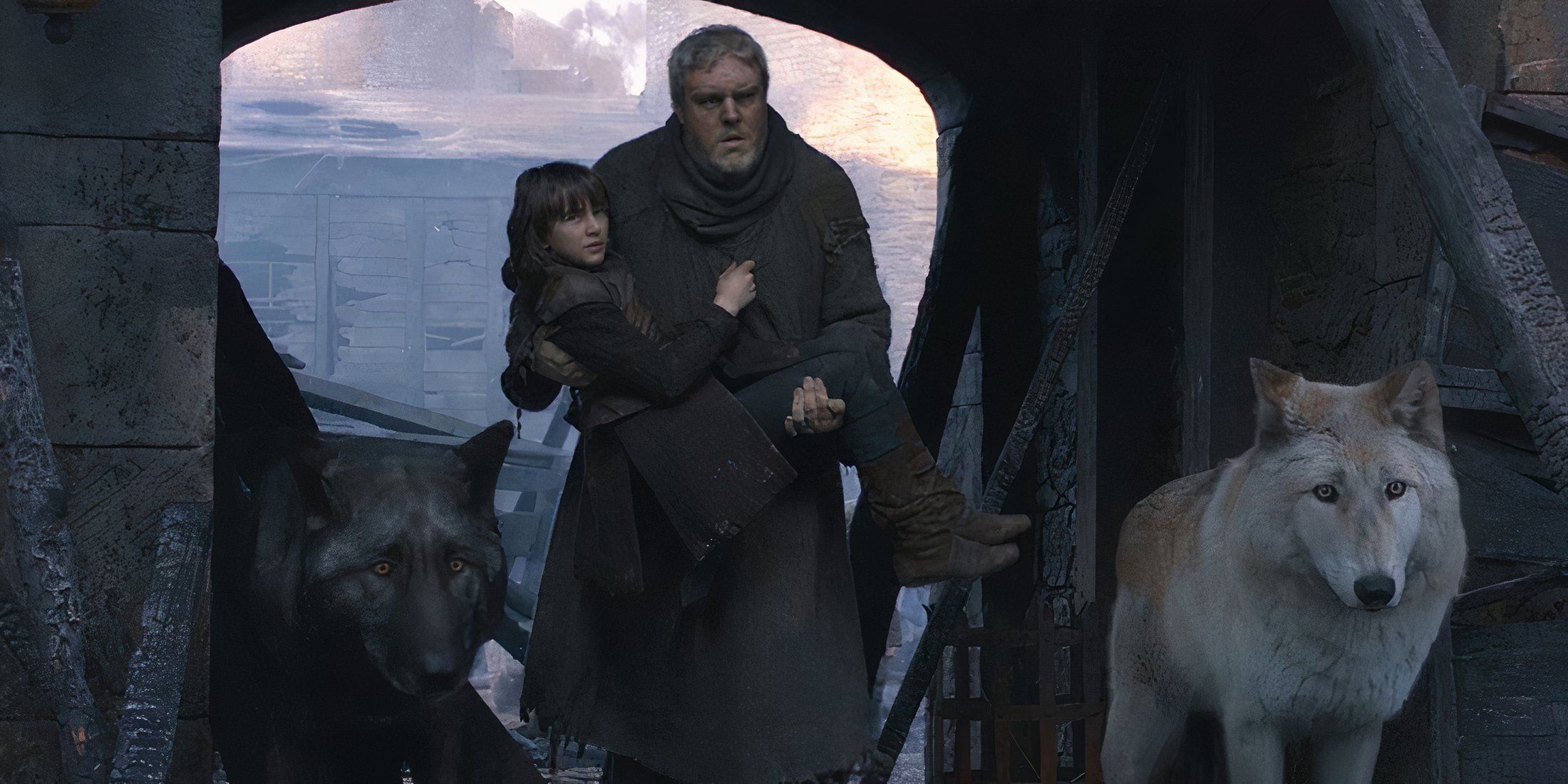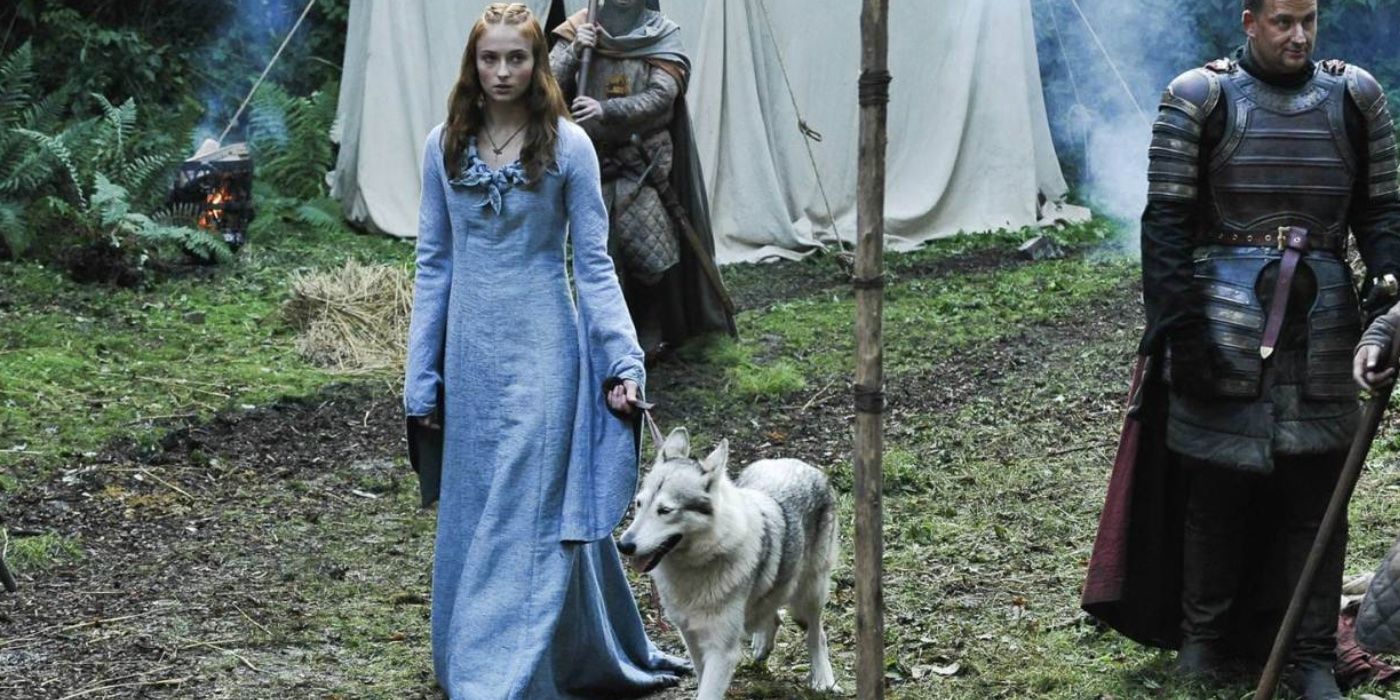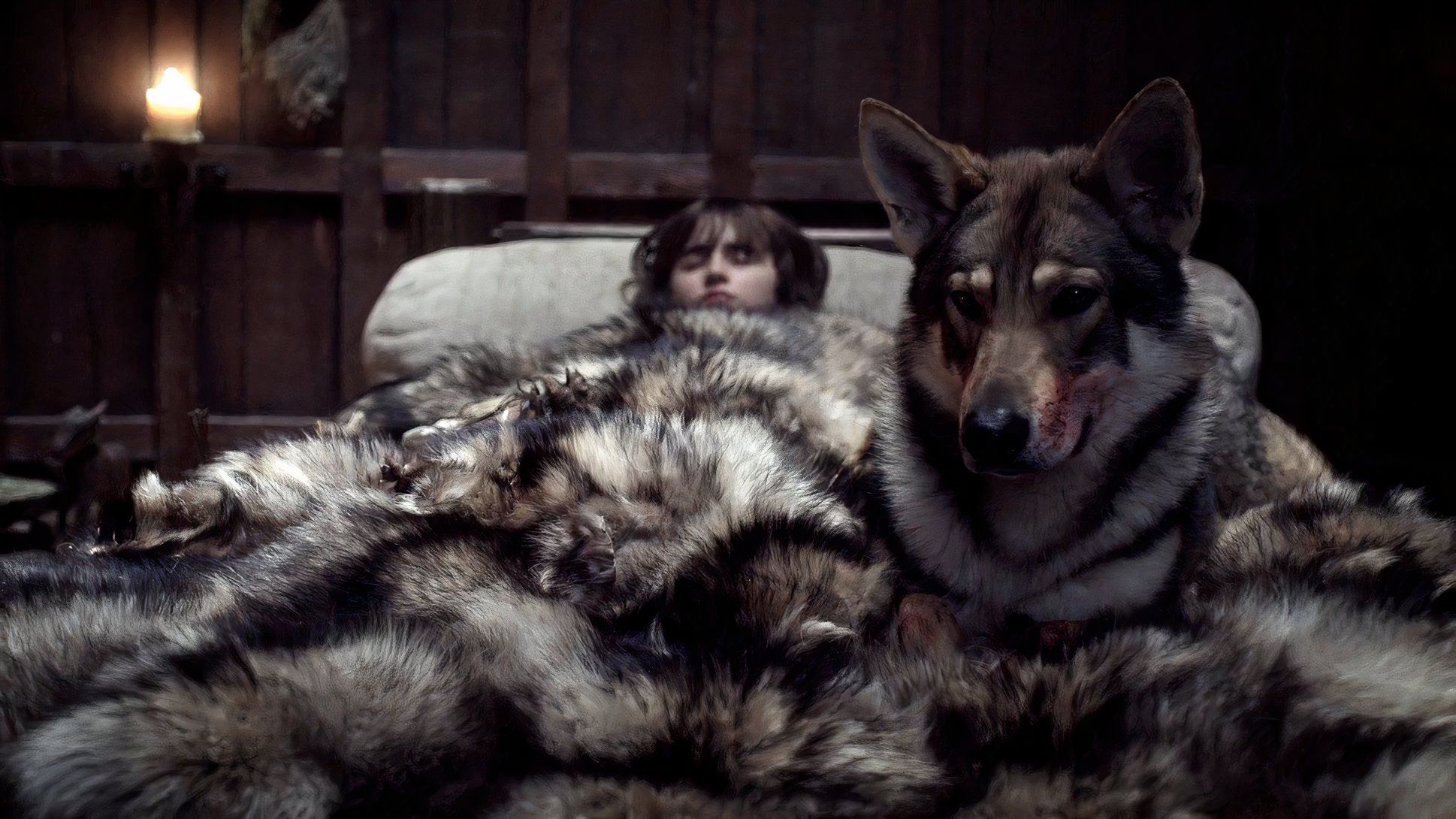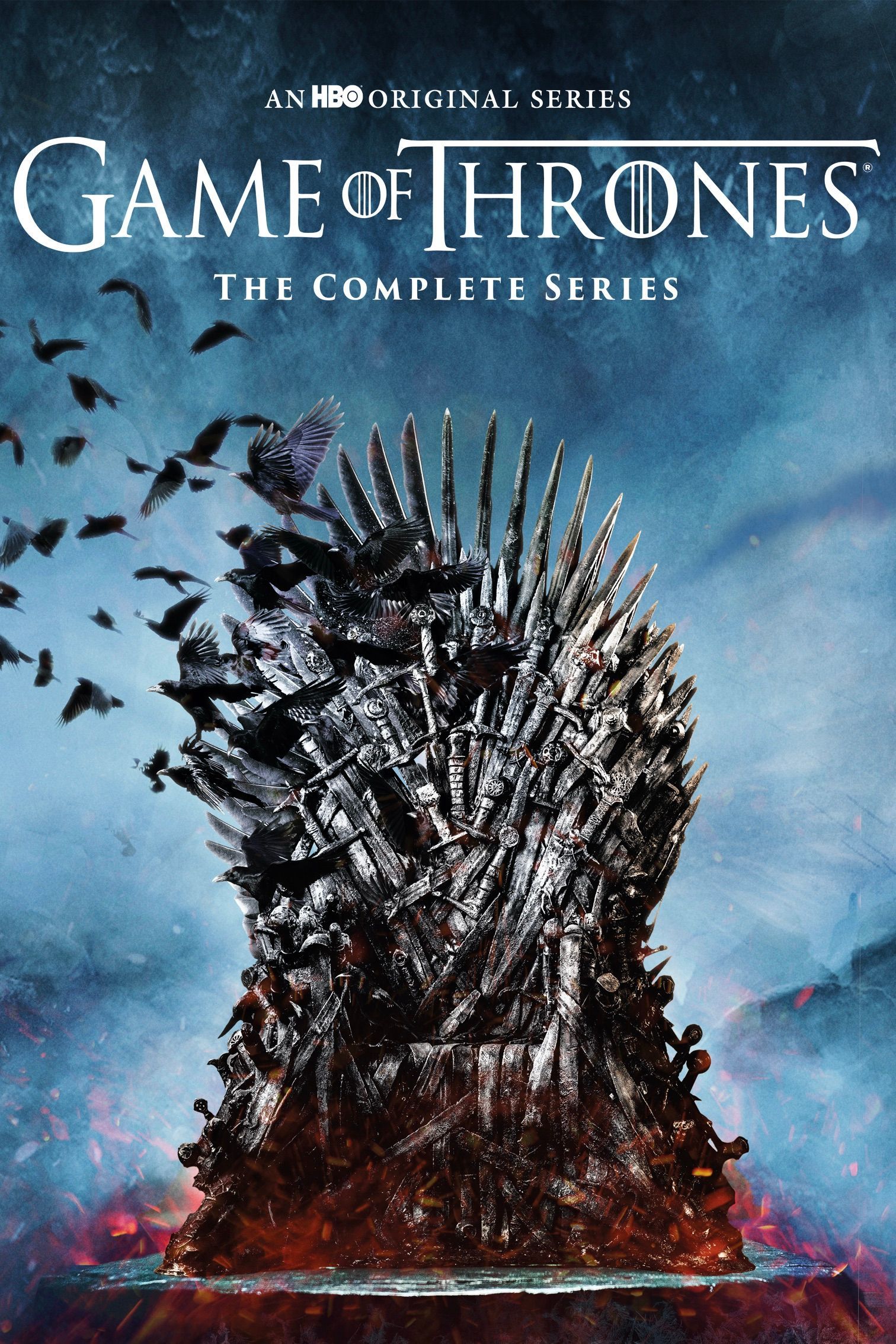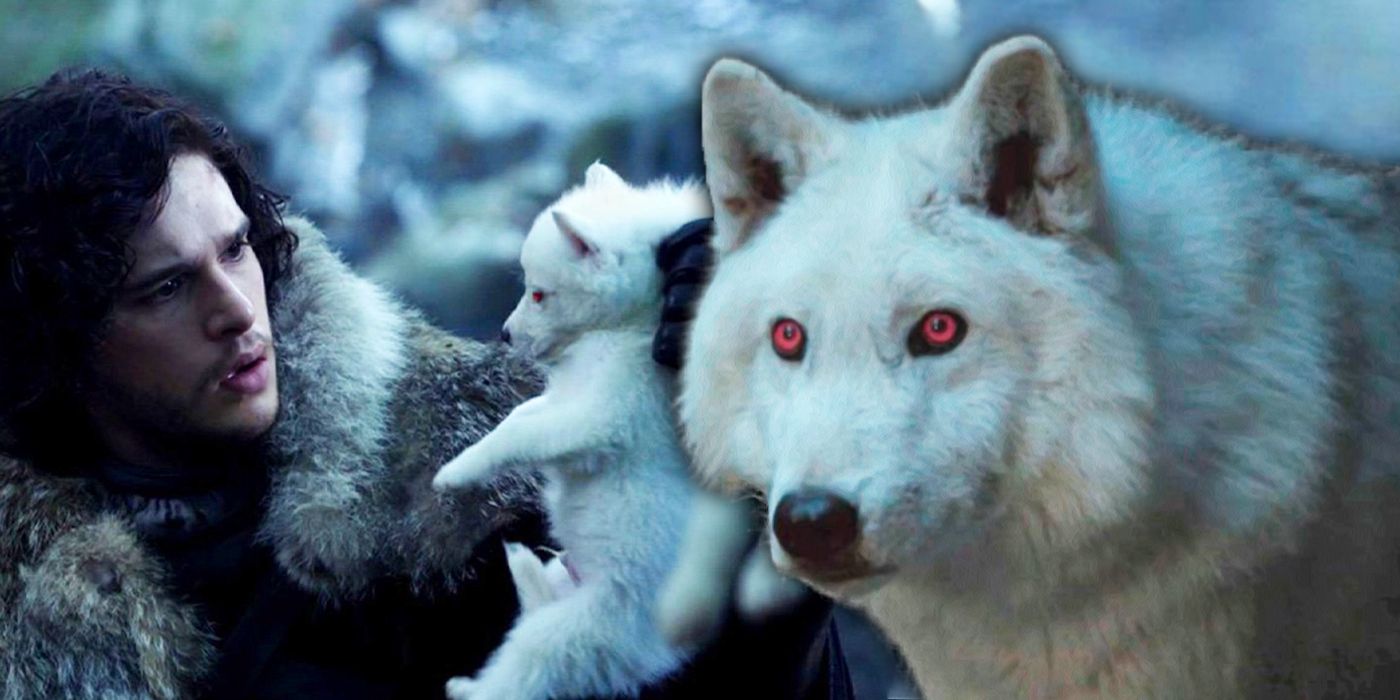
Since the first episode of Game of Thrones, the Stark family’s direwolves have captivated audiences with their mysterious presence and deep bond with the Stark children. These animals are more than pets; they are symbols of the Stark family’s legacy, resilience, and connection to the ancient, mystical North.
Each direwolf embodied aspects of their Stark owner’s personality and fate, making them a vital part of their character development and the show’s emotional narrative. However, throughout the series, the direwolves experienced various fates, with only one surviving the entire run of the show. This article will dive into each direwolf’s journey, their symbolic significance, and what their ultimate fate says about the world of Game of Thrones.
The Direwolves and the Stark Share a Mystical Connection
In the very first episode of Game of Thrones, Ned Stark, his sons Rob, Ban, Jon Snow, and his ward Theon Greyjoy stumble across a dead female direwolf and her pups, who are alive. Jon Snow, Eddard’s bastard son, suggests that each of the five Stark children should keep a wolf pup, noting that the direwolf is the sigil of House Stark. When they are just about to leave, Jon discovers an additional pup whom he gets to keep.
While they can easily be perceived as simple companions, these direwolves become more than just guardians; they are spiritual companions tied to the destinies of their Stark owners. Furthermore, the separation of the mother direwolf and her pups foreshadows the scattering of the Stark children and the death of their father, Lord Eddard. The fact that the mother direwolf was killed by a stag further reinforces this, as the stag is the sigil of House Baratheon. King Robert’s offer to become his Hand of the King ultimately led to Ned’s death.
Ghost Is a Loyal Companion and One of Two Survivors Among the Direwolves
Companion: Jon Snow
Ghost, the albino direwolf, is arguably the most iconic wolf in Game of Thrones, largely due to his connection with Jon Snow. According to A Song of Ice and Fire, Jon named him Ghost because of his looks and silence — Ghost never makes a sound. Unlike the other direwolves, Ghost was found separated from the others, much like Jon, who always felt isolated as Ned Stark’s “bastard” son. Ghost’s white fur and red eyes distinguish him from the pack, and they mirror Jon’s journey of carving out his own identity. Ghost remains by Jon’s side through thick and thin, accompanying him to the Wall and fighting beside him in battles. Some of his most notable moments include saving Samwell Tarly from a wight and standing guard over Jon’s body after he is stabbed to death by members of the Night’s Watch. Ghost’s loyalty is unwavering. He embodies Jon’s protective and stoic personality.
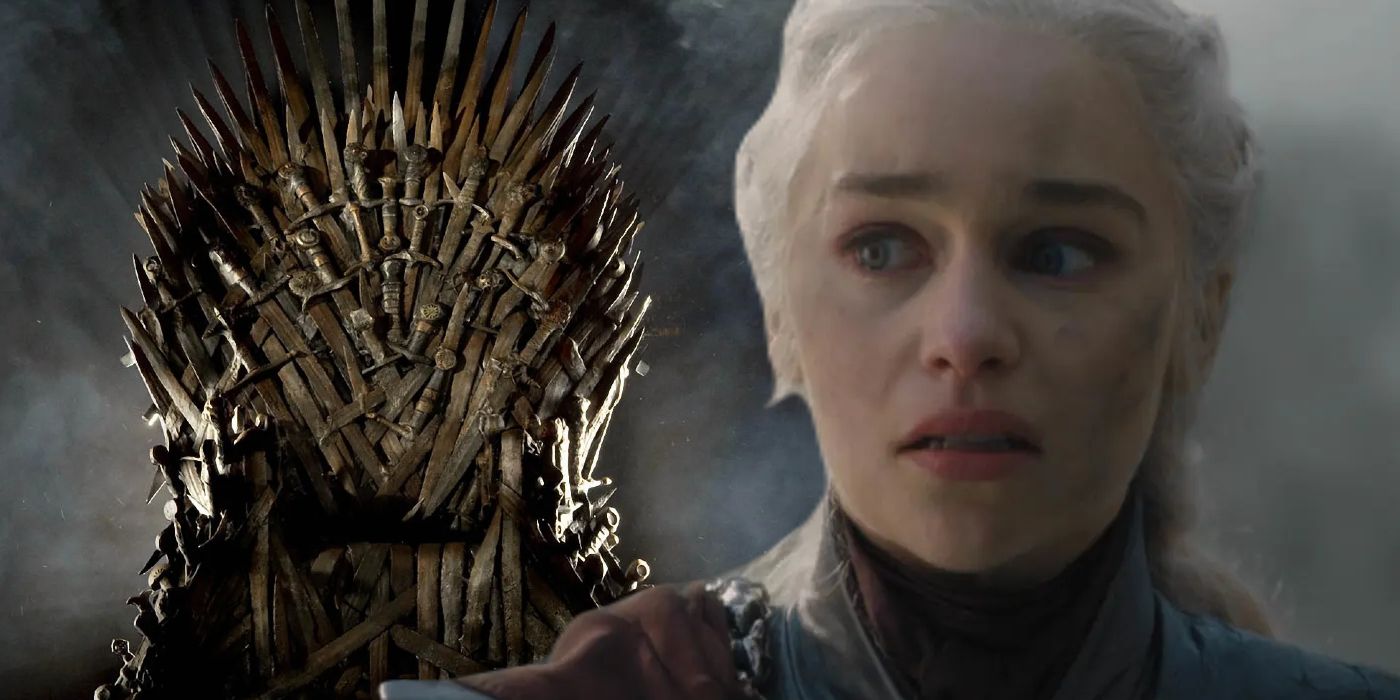
Related
10 Ways the Game of Thrones Movie Can Redeem Season 8
Five years after its disappointing finale, the Game of Thrones franchise is moving to the big screen. Here’s how a GoT film can redeem the series.
In the final season, Ghost participates in the Battle of Winterfell against the Night King and his army and survives but loses an ear. While the show received criticism for the scene where Jon walks away from Ghost without petting him, he ultimately reunites with his furry companion in the series finale. Their reunion in the North represents Jon’s acceptance of his identity and his place away from the politics of Westeros. Ghost’s survival symbolizes hope and resilience. Ghost’s survival corresponds to the enduring spirit of the Starks and the resilience of those who stay true to themselves. In A Song of Ice and Fire, Ghost may hold an even deeper significance, especially because of Jon’s warging abilities.
Nymeria Is a Fierce, Surviving She-Wolf
Companion: Arya Stark
Arya’s direwolf, Nymeria, mirrors Arya’s personality. Named after a legendary warrior queen, Nymeria embodies Arya’s strength, courage, and defiance of traditional roles for women in Westeros. However, Nymeria’s fate diverges early on from the other direwolves after she attacks Prince Joffrey to protect Arya. To save Nymeria from being executed, Arya drives her away, forcing the direwolf to flee into the wilderness. This moment of sacrifice marks a pivotal shift in Arya’s journey, setting her on a path of survival and independence.
Much later in the series, Arya encounters a fully grown Nymeria leading a large pack of wolves in the Riverlands. Arya tries to coax her old companion to come with her, but Nymeria ultimately walks away. Arya realizes that Nymeria, much like herself, has changed and cannot simply return to the life she once had. Nymeria’s journey away from Arya mirrors Arya’s transformation throughout the series. Both embrace their independence, carving out their paths outside traditional roles and expectations. The brief reunion reinforces Arya’s growth and the acceptance that some things, like their bond, must be left in the past.
Grey Wind Remains a Bold Companion Despite a Tragic Fate
Companion: Robb Stark
Grey Wind, named for his speed and agility, shares Robb Stark’s boldness and bravery. Grey Wind follows Robb into battle, reflecting the Young Wolf’s unyielding spirit and sense of duty to his family. His presence on the battlefield intimidates enemies, and he is fiercely protective of Robb. In one scene in Rob’s camp, Greatjon Umber challenges Robb’s authority by questioning his battle plan. He insists that he should lead the main assault. When Robb denies him, Greatjon becomes angry and threatens to leave the camp. In response, Grey Wind growls and lunges at Greatjon, biting off two of his fingers. However, during the infamous Red Wedding, Grey Wind is locked away outside. After Robb’s assassination, Grey Wind is killed by Frey’s men. In a final act of cruelty, his head is sewn onto Robb’s body.
1:30
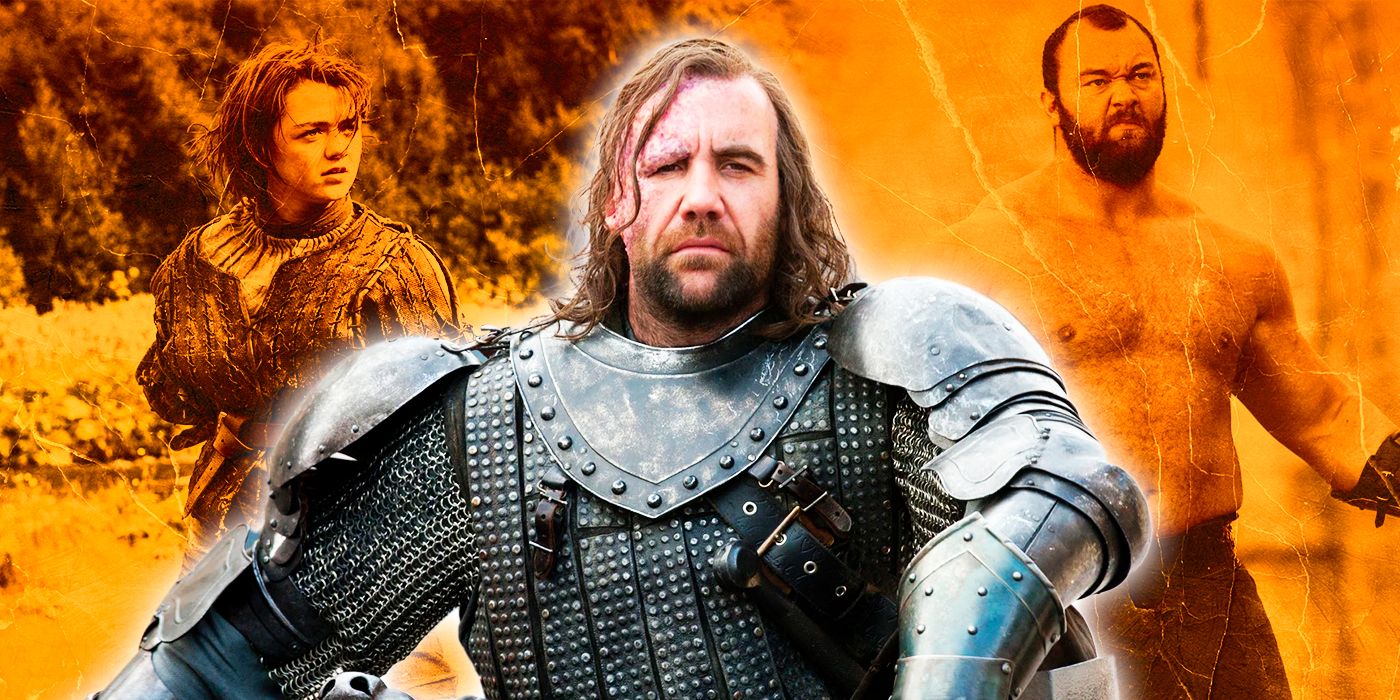
Related
One of Game of Thrones’ Best Fighters Was Much Different in the Books
Sandor Clegane is one of Game of Thrones’ greatest heroes, but he originally looked much different in George R.R. Martin’s novels.
Grey Wind’s death symbolizes the tragic fall of Robb Stark. His fate at the Red Wedding represents the brutal and merciless nature of the political world of Westeros. While Robb attempted to make up for his failure to marry one of the Frey girls, Walder Frey felt snubbed and plotted with the Lannisters to kill the Starks to gain power in the Riverlands. Grey Wind’s loyalty to Robb reflects the closeness between the Starks and their direwolves, and his tragic end mirrors the great losses the Stark family endured.
Shaggydog Proves Himself to Be a Wild, Uncontrollable Protector
Companion: Rickon Stark
Shaggydog, Rickon Stark’s direwolf, is as wild and unpredictable as Rickon himself. Unlike the other wolves, Shaggydog does not follow specific commands, symbolizing Rickon’s young, untamed spirit. Following Ned Stark’s death, Osha carries Bran into the crypt of Winterfell after Bran claims he saw his father in a dream. Osha, a Wildling and rarely afraid of anything, is just as terrified as Bran, when Shaggydog aggressively growls at them, ready to attack, but is stopped by Rickon.
After Theon’s attack on Winterfell, Shaggydog accompanies Rickon, Osha, Bran, and Hodor when they are forced to flee from their home. When Bran realizes he must go north of the Wall, he asks Osha to bring Rickon to House Umber. For much of the series, Rickon and Shaggydog are out of sight, living beyond the conflicts of Westeros. In Season 6, Rickon and Osha are captured by Smalljon Umber and turned over to Ramsay Bolton, together with the severed head of Shaggydog. Rickon’s lack of control over Shaggydog parallels his lack of control over his fate. Their untimely deaths underscore the senseless loss that often plagues House Stark and the brutality faced by even the youngest members of their family.
Lady Is a Gentle Beauty Who Pays a Sad Price
Companion: Sansa Stark
Lady, Sansa Stark’s direwolf, is a gentle, beautiful creature that reflects Sansa’s initial innocence and desire to fulfill traditional roles. Lady’s loyalty and grace mirror Sansa’s early aspirations of being a proper lady in the courtly world of King’s Landing. In a tragic turn of events in Season 1, Lady is sentenced to death by Cersei after Nymeria attacks Joffrey.
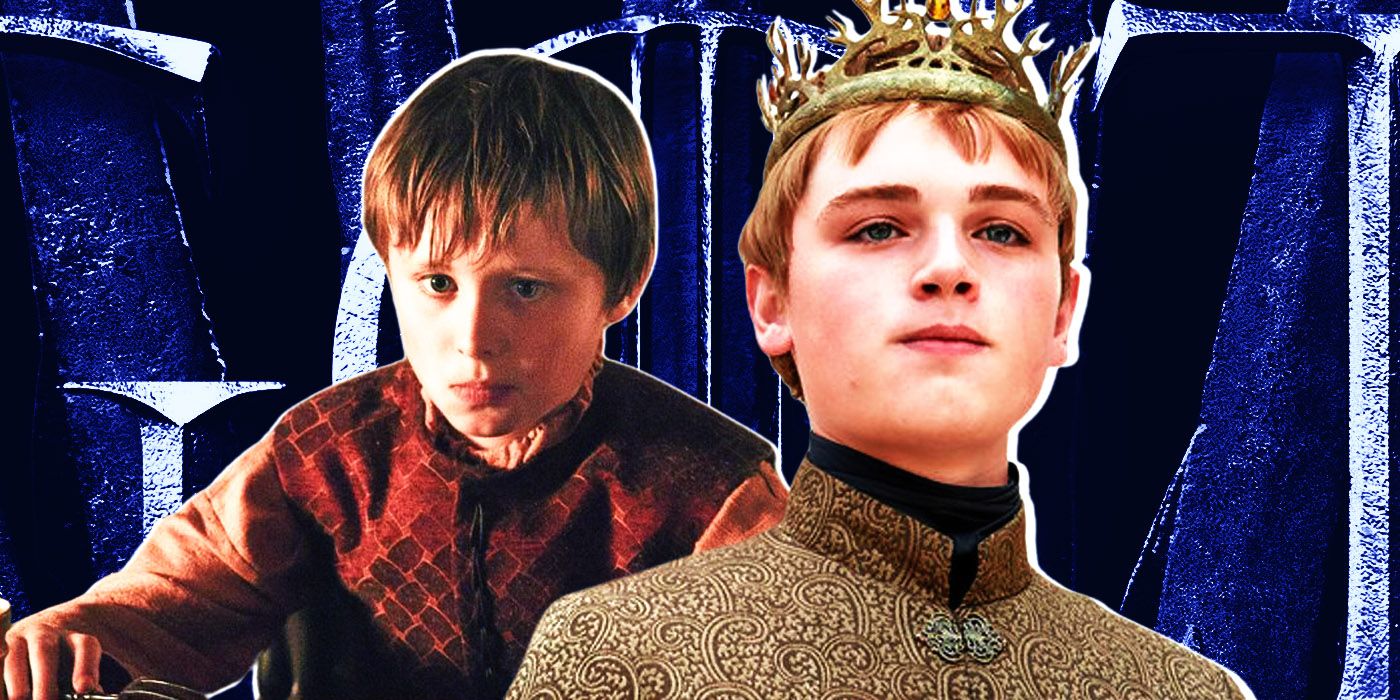
Related
Game of Thrones’ Most Tragic Character Deserved So Much Better
Game of Thrones is a show filled with extremely tragic stories, but few characters deserved their sordid ending less than this short-lived king.
Since Nymeria cannot be found, Cersei demands Lady’s life as retribution. Ned Stark is forced to carry out the execution himself, marking Sansa’s first encounter with the cruel realities of the world she once dreamed of. Lady’s death represents the end of Sansa’s innocence and foreshadows the trials she will face in her journey. Stripped of her companion, Sansa is left to navigate the dangers of King’s Landing on her own.
Summer Fights to Be a Loyal Defender at the Cost of His Life
Companion: Bran Stark
Summer, Bran Stark’s direwolf, resembles loyalty and resilience. Summer stays by Bran’s side while he is in a coma, embodying the steadfast bond between the two. The wolf also helped to protect Bran, when Jaime Lannister sent an assassin to Winterfell to kill Bran. Summer saves Bran’s mother Cat and kills the assassin. Bran’s direwolf was nameless for quite a while. When Bran finally awakes from his coma, he spontaneously names him Summer, indicating that his loyal companion kept him warm while Bran was fighting for his life.
In Game of Thrones, Bran is the only Stark who possesses the ability to warg into his direwolf. Bran wargs into Summer to scout areas and even goes hunting. Together, they navigate the mystical elements of Bran’s journey, particularly his developing powers as the Three-Eyed Raven. As Bran journeys beyond the Wall, Summer remains by his side. However, in Season 6, during the battle at the cave of the Three-Eyed Raven, Summer sacrifices himself to save Bran from wights, allowing him to escape. Summer’s death represents the end of Bran’s journey as an ordinary human and his transformation into the Three-Eyed Raven.
Discover more from reviewer4you.com
Subscribe to get the latest posts to your email.
